Seckford Agencies’ David Cartwright shares his personal manifesto on how South Africa’s premium wines can succeed in the UK.
I have a confession to make. I have been having an affair for 26 out of the 38 years I have been working in the wine industry. A wine affair with South Africa. Not just its wines, but its people and its communities. A wine affair that means I have been travelling to South Africa at least once a year for those 26 years – and long may it continue.
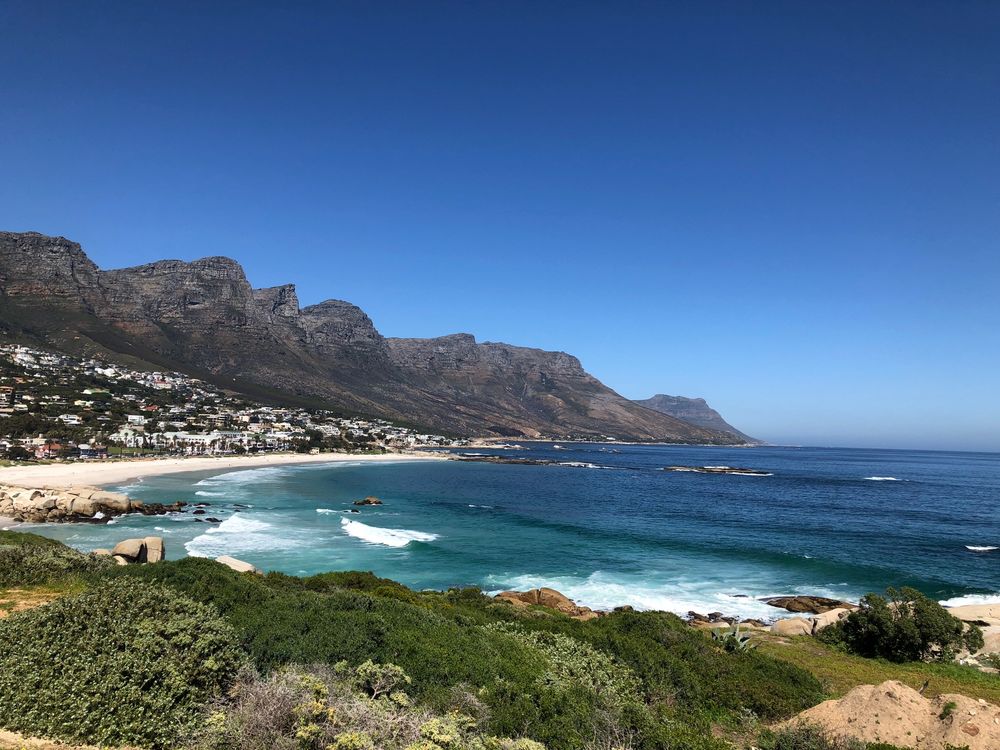
With scenery like this it’s not surprising Seckford’s David Cartwright has fallen in love with South Africa, its wines and its people
To paraphrase the 70s crooners 10CC – I don’t like South Africa, I LOVE IT –to such an extent I even supported the Springboks in the last Rugby World Cup Final.
But I am not alone. Thankfully Pippa Woods, founder of Seckford Agencies, who I have worked with for the last 10 years, fell in love with South Africa ever since she started the business in 1999 and the bond she personally has built between Seckford Agencies and South Africa ever since.
Seckford Agencies started with one desk, one dog and one agency.The business plan was to supply independent merchants with all their wines from the New World from one agency, on one order. We represent wineries from all the southern hemisphere in our portfolio.
But it’s South Africa that makes up by far and away the majority of what we do and what we wish to be famous for. It’s the country, the people, and the wines of South Africa that Pippa and I love the most.
Over 20 years later we have 10 desks and five dogs with a portfolio of some of the finest wines from South Africa that we supply to retailers across all channels of the market, from Tesco to Harrods.The Seckford way is quite simple. To surround ourselves with fabulous, pioneering family-owned wineries. For each supplier partner we identify a route to market to meet their capability and expectations. We own the business and can make quick decisions – which is a huge asset for our clients and suppliers.
Over the last eight years, in a neat parallel with the rise of the Springboks, Seckford has been on an upward curve and our South African business has seen a 25% increase in FOB value per bottle, our volumes are up 35%, with value up a healthy 65%. We are proud of our achievements – but we are not complacent.
Trust and reliability
There are two key areas where we work hardest on to differentiate ourselves from other agencies:
- Firstly to build and maintain strong partnerships with our clients and suppliers.
- Secondly to ensure our customers are kept in stock.

David Cartwright sets out his blueprint for South African wine in the UK at Vinpro conference in Cape Town in January
Our standards entirely mirror those of our most demanding customers – getting it right first time, meeting deadlines, beating deadlines. We make it straightforward for our clients to trade with us. Trust is the currency we deal in – it is very hard to earn and much easier to lose.
We hear a lot about businesses “adding value” between themselves and their supplier or customerspartners. But what does that actually mean? Here are some ideas:
- Provide great vintage reports and supply chain updates about what is happening at Cape Town Port,
- Get winemakers to make videos introducing wines and new vintages to existing and potential clients.
- Bringing buyers and store managers out to South Africa from our key retail partners so they can see the magic of South Africa for themselves.
It’s vital we can take as many people as possible from the trade to South Africa to share the love. It should be a strategic aim for anyone making, selling or importing South African wine.
To paraphrase Andrew Bird, the former head of buying for Woolworths in South Africa – If we can’t add value, then we shouldn’t be in the supply chain.
Understanding the supply chain
To get a Seckford Wine onto a retail shelf means we have to understand our role in the supply chain. If our customer hasn’t physically got the wine, that we “sold” them, they can’t sell it.
If you work in the wine supply chain you should all have one obsession – availability.
Let me explain why…
Twenty years ago I worked for a company that was the supplier of Tesco’s own label Chablis. One year, in the weeks leading up to early December and the key Christmas sales period for what was Tesco’s most important premium own label white wine, I received a phone call from a very frustrated – euphemism for furious – wine buyer demanding to know what the heck was going on as his warehouse was totally out of stock of the wine.
To my shame, I didn’t know he was out of stock, nor did I know where the wine was between the winery and the warehouse.
This was my Eureka moment.
I suddenly realised I was not in the wine business at all. I was in the supply chain business.
It’s one of the most powerful and valuable lessons I have ever learnt. When I hear people in our industry use the phrase “I leave orders and shipping to others” it makes my blood boil. I did say I was obsessed with availability, didn’t I?
As a result of this painful episode, I know what customers expect and what great customer service looks and feels like.
All our customers have a choice, many choices, of who to buy from. We do our damned hardest to make them choose us and give them every possible reason to stay with us.
How partnerships work
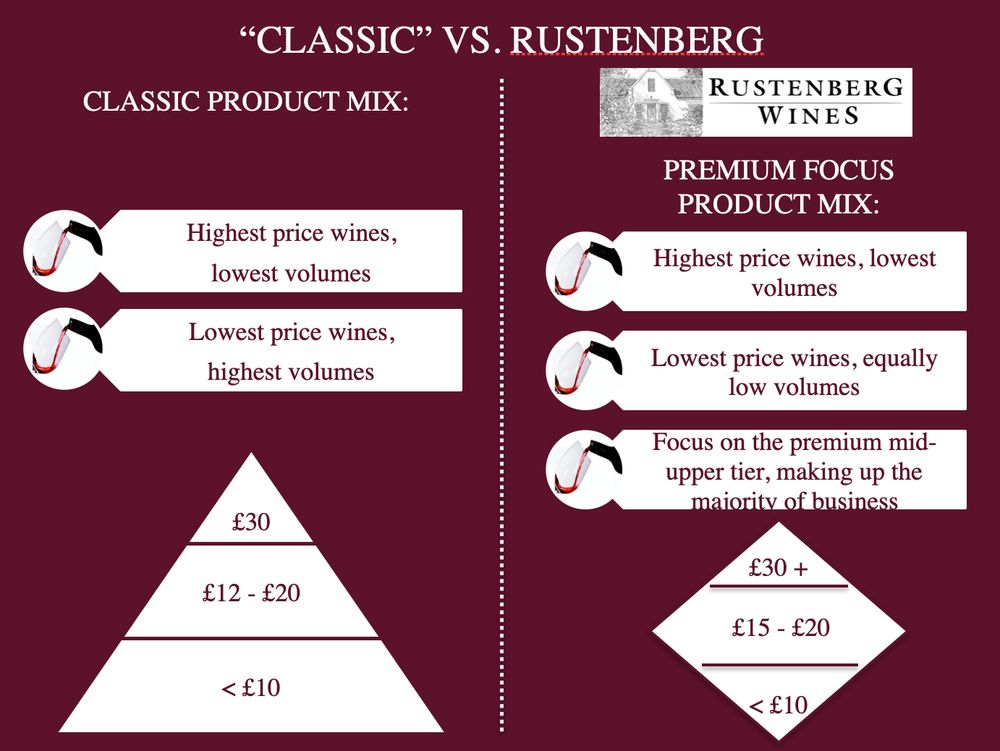
David Cartwright sets out Rustenberg has succeeded in the UK with the above strategy for its wines
Here is an example of a brand in the Seckford portfolio that illustrates just how strong and building effective partnerships can be. The 40-year overnight success story that is Rustenberg wine. If you ask founderMurray Barlow what the secret has been to that success he has a simple answer. Great people and great wine.
Dig a little deeper and he says it also comes down to clarity of expectations on both sides backed up by a very clear, consistent, and coherent brand plan – from planting decisions to packaging to pricing and so on.Best illustrated in this image here.
On the left you can see the traditional triangle brand plan that all will be familiar with – on the right is the Rustenberg brand plan – the KITE as Murray calls it.
Limited availability at so called entry level and premium but, importantly, scale for the core lines – John X Merrimann and Stellenbosch Chardonnay. These are the icons – the wines that the brand wants to be famous for.
Having this clarity from the brand owner ensures that myself, colleagues, trade, and press can understand what the brand is setting out to achieve and why we should invest our time and resource into the brand. At Seckford we see ourselves as an extension of Rustenberg, indeed of all our core supplier partners – our success is their success.
South Africa’s UK opportunity
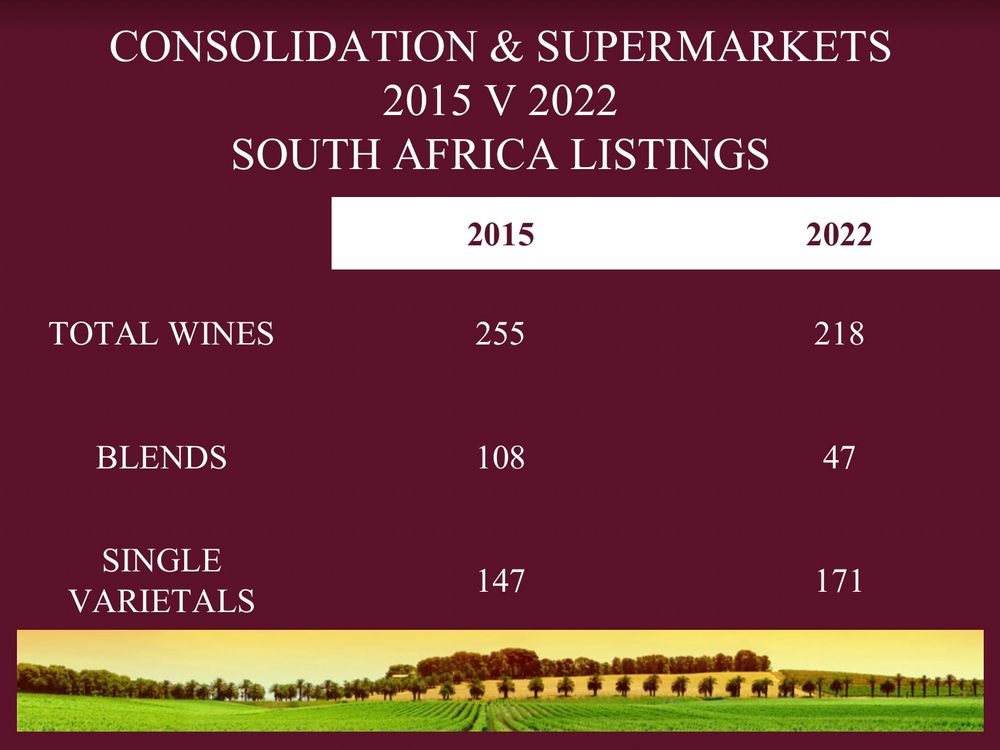
Listings of South African wine in the UK has contracted over the last seven to eight years
Let’s take a look at what’s happened in the UK supermarket sector between 2015 and 2022 – the channel responsible for selling 80%of all wines sold in the UK.
The numbers of South African wines on sale in UK supermarkets have contracted in that time, with blends having more than halved. Single varietals are up, however, but as retailers don’t have rubber shelves the loss of space is a concern.
Despite these figures there are opportunities abound for South African producers and their brands.Let me explain.
This snapshot slide compares sales of all wines, in the 12 weeks to November 2022 compared with the 12 weeks to November 2021 and highlights the which price points your wines are being sold.
Three things stand out for me:
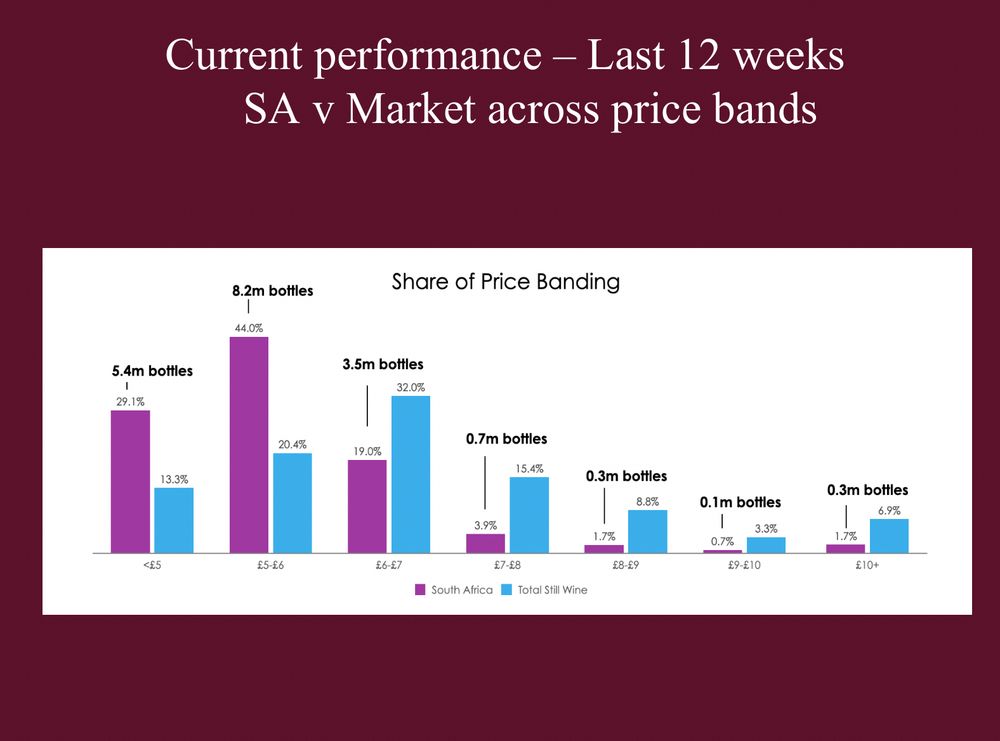
A breakdown of South African’s sales in the UK off-trade in the 12 weeks to November 2022
- 70% of all South African wines are below £6.00..
- There is a gaping hole between £7 and £10
- Size of the prize for wines sold over £10.00 – a whopping 300 000 bottles
It’s in this £10 plus part of the market that South Africa has a greater market share of Malbec, as a percentage of total sales than Argentina. It’s also in this £10 plus part of the market that South Africa has a greater market share of Chardonnay, as a percentage total of total sales than any other southern hemisphere country. That demonstrates the opportunity there is for premium South African wine brands.
But there’s more.
In the above £10 category South Africa is performing far better than both Australia or New Zealand. We all need to work harder to make sure this is a trend and not a statistical blip
Independents and on-trade
The £10 plus opportunity means South Africa needs to be focusing even more on independent wine merchants and the on-trade. Particularly when you consider 90% of what independent wine merchants sell is over £10. What’s more the buyers are loyal to their suppliers, their customers value quality, authenticity and want to hear your stories.
South Africa came second as the most exciting category for independent wine merchants behind Portugal in a recent survey.
The on-trade shopper is even more nuanced. It’s here where your wines often need to be hand sold. But we should all take serous note of findings from current research by IWSR showing it’s the Gen Z/Gen x who are buying more wine in the on-trade. They are adventurous in their choices.They have good levels of disposable income and are attracted to modern funky labels as opposed to traditional and classic ones. They live their lives on Insta and Tik Tok – and these media channels will become more dominate in influencing younger shoppers in the future.
Getting listed
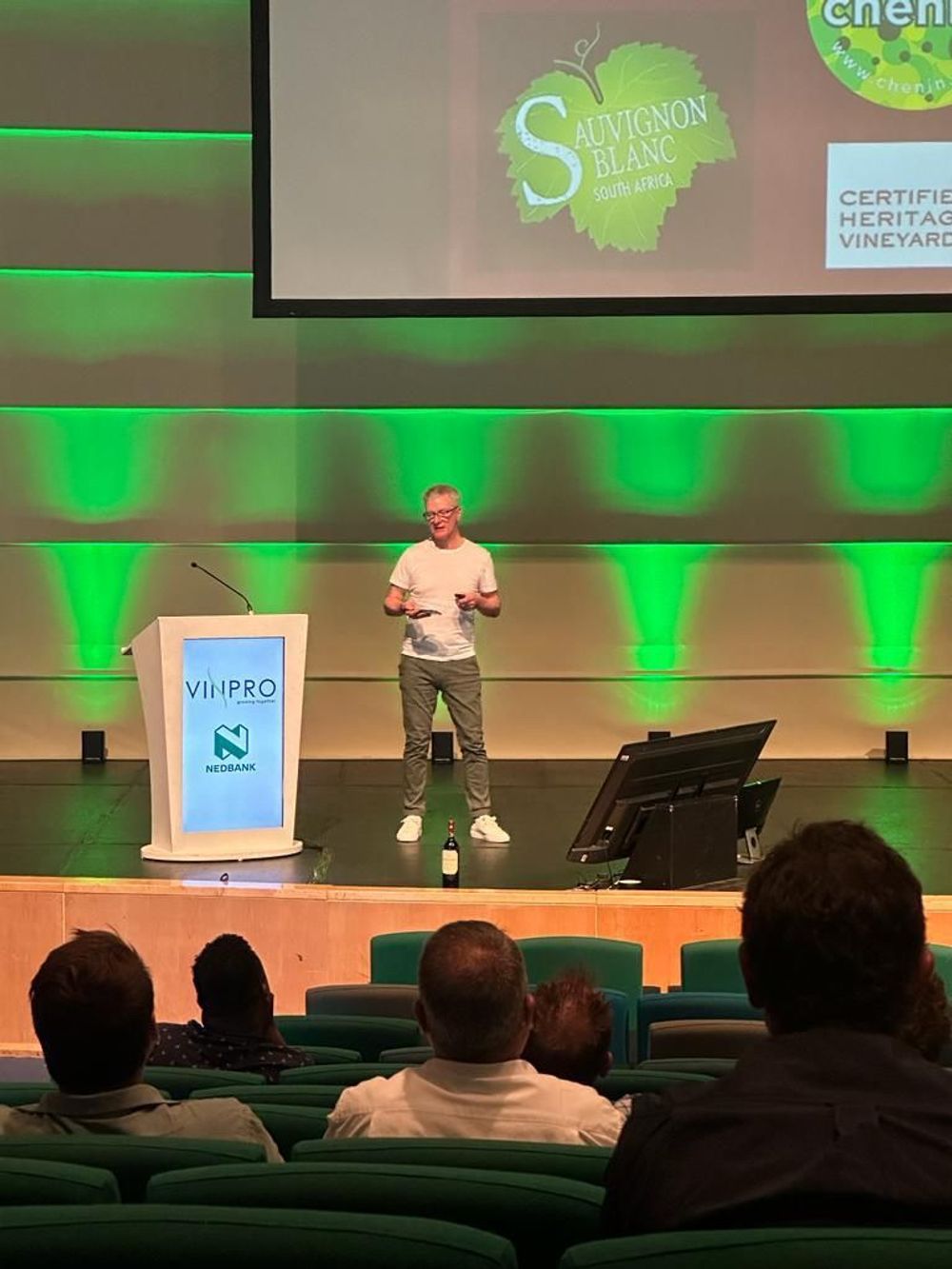
David Cartwright sets out what it takes for a wine brand to be listed by a UK importer or distributor
To take advantage of these opportunities you need to have your wines listed by an importer or distributor. Which, as we know, is easier said than done. It’s often the final piece of the supply chain jigsaw.
To get that right we need to look at what we are doing not from a wine perspective but ask
“Where could and should my wine end up and how will I make it look attractive enough to be selected?”
Remember occasion is the key driver of choice which can be varied and sometimes personal. Shoppers will then use a multitude of factors to consider before buying a bottle. Colour, price, taste etc. These will differ based on how involved or how interested the shopper is in the category and where they are buying the wine, be it in a supermarket, a restaurant, or on a crowded website.
Ultimately you have to make your wine, your story, your packaging relevant to your target shopper.
As Deloitte put it succinctly a couple of years ago “customer preference at the end of the distribution channel is what determines demand for the producer”.
The DC Manifesto
To sum up? Here’s the DC Manifesto:
- Find the right partner – there are so many good ones out there.
- Availability. Don’t leave it to others. Obsess about it. Without this last piece of the jigsaw, the job will not be completed.
- Understand your capabilities and double down on them – do you need to make all those different wines?
- Do you have clear expectations of what your packaging should be for your target audience/ sales channel – so different for supermarket vs. on trade.
In considering these points then maybe we can all be part of the new era, as we reach a tipping point of opportunity and thrilling times that lie ahead.
We had renaissance in 1994, revolution between 2010 and 2015 – is it time for Revolution 2.0? I am convinced we are.
It’s been my pleasure to connect with Nelson Mandela’s PA, – Zelda La grange, over the last couple of years. I read her book, I commented on Insta, and we have been in touch ever since.
I asked her what Madiba would say if he was still present today – and she kindly suggested the following.
Let’s all be optimistic.
- This is an edited and adapted version of a speech given by David Cartwright at the Vinpro conference in Cape Town in January.








































